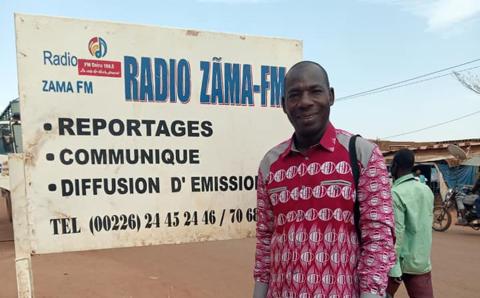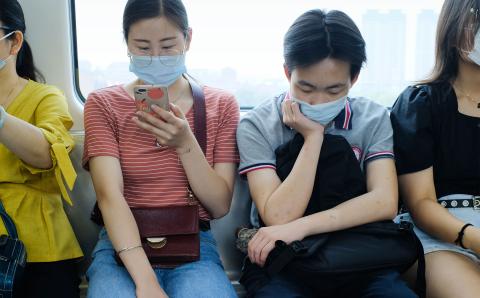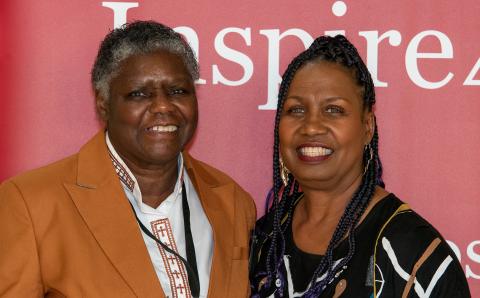Editor’s Note: With sponsorship from Multiplication Network, The Banner’s 2022 Young Adults Writing Contest took place this summer, with 35 young adults submitting essays on the topic “What gives you hope?” This is the first-place winner. You can read the other winning essays here.
A periwinkle blur brushed past my shirt.
I froze. It was a tiny butterfly, weaving in and out of the tall grass. I held my breath and waited for it to land so I could take a closer look. It zigzagged through the air until it settled upon a blade of grass in the path in front of me.
The butterfly fluttered back into the air in alarm when I moved because I shifted my weight too quickly. When it landed again, I took one slow step forward. Then another. Then another. My muscles trembled from the effort of moving in slow motion. Then I crouched down bit by bit, hair falling forward. I winced as my knee, then my ankle cracked loudly and let out a gentle sigh as I settled into a crouching position, craning my neck to see better.
The small butterfly almost disappeared when it was still, its wings folded neatly together. The periwinkle flash I had seen while it was in the air was now hidden. Dark dots were on its gray-fuzz-fringed wings.
Silvery blue is its name. The silvery blue. I looked it up when I got home and discovered that it’s a common butterfly native to Canada. I smiled at the new friend I’d made, the soft and sly gossamer-winged insect that eats from bluebonnets.
Thinking about my new friend now, the silvery blue has gifted me with three realizations.
One, God created this butterfly even though there is so much brokenness in this world.
Two, the butterfly had to die to its caterpillar self to transform into a butterfly.
Three, there is a time to conceal beauty and a time for beauty to be revealed.
These three epiphanies are all woven together into the fabric of hope.
First, you and I know this world is broken. There are exploding bombs, bloodshed, abandoned children, natural disasters, and more. Even though all these tragedies happen beneath the same sky, our Creator has the thrilling audacity to breathe life into this delicate insect and to delight in its movement, waking, sleeping, and eating. It can give us awe at the Creator who spoke it into existence. It is a glimpse of heaven, an ethereal wink at you and me, a glimmer of the perfect delight that is to come. It reminds us of who our God is amid the turmoil, and that gives us hope that will never fail.
Second, when you were a child, you probably learned that butterflies aren’t born with their wings. It’s the same with the silvery blue. It had to “die” to its old caterpillar self in the chrysalis and then poke its head out of its cocoon, unfolding its gray-blue wings to dry in the sunlight. Similarly, those whose bodies are lying in the soil now will burst into flight in an explosion of color when Christ comes back again to restore this earth once and for all. It will be beautiful. Oh, it will be beautiful.
My mother is among those whose body is in the earth. Waiting. Waiting. Waiting. Her body is in decay while she is dancing in heaven. I wait, and her body waits; we all wait. Her grave is expectant, a kind of chrysalis, and she is simply waiting for Christ to transform her lowly body so that it will be like his glorious body. Waiting to burst into flight, into new life. And when she does, she will exude vibrant gold, azure, vermillion, evergreen, amethyst—and colors we can’t even imagine here on earth. And we will all be beautiful. We will all be renewed through Christ and soar in the unhindered presence of God. This is a certain hope that will never fail.
Like my mom, we are all waiting for our bodies and for the beautiful work in our lives to be completed. That brings me to the third epiphany: there is a time for beauty to be concealed and a time for beauty to be revealed. And when we are in that in-between time, in the already-but-not-yet, we need the hope that God is working in us and will reveal our beauty.
When the butterfly had its wings folded, it was already beautiful in an understated way—with the dark dots and the fuzzy fringed edges and the silvery sheen—but it was almost unnoticeable in the landscape. When the butterfly had its wings folded together, it seemed that the unnoticeable gray was all there was to it. But when the time came for it to fly, God exposed the entirety of what he had created it to be. That’s when the blue became a streak across the landscape—it was stunning because its beauty was unveiled.
Are you frustrated with waiting to see how God will completely reveal your beauty and the beauty of this universe—beauty that isn’t braided with brokenness, beauty wholly released? When the time comes for Jesus to come back and restore this earth, he will release all your beauty that you have been fighting to uncover.
Amidst all of this brokenness, be expectant for God to remind you of who he is.
What eventually scared away the silvery blue was an abrupt movement of my hand. I felt a bit forlorn, but I was joyful that God had tugged back the tattered fabric of this broken world to give me a taste of heaven. I was honored that this little creature had allowed me to observe it for so long, and now it fluttered into the air, transforming from camouflaged gray into periwinkle that flashed against the grass and eventually across the sky.
If you pay attention, you might just see the places where heaven meets earth—that’s where hope is blazing. Look around. God is closer than you think. Perhaps he will send a silvery blue across your path to give you a taste of the beauty that is yet to come.
About the Author
Ruth Ann Bos is majoring in English writing and art at Redeemer University. She attends Immanuel CRC in Hamilton, Ont.








